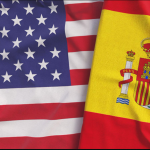Art, in its broadest sense, is one of humanity’s oldest languages—a mode of expression that predates written alphabets and exceeds the boundaries of conventional communication. From the earliest cave paintings to digital installations, artistic creation has served as both a mirror and a memory of human existence. It functions as a living archive where emotions, experiences, and insights are stored not in words but in forms, movements, and sounds. Through this lens, art is not a passive reflection of knowledge but an active participant in its generation and transmission.
When we observe ancient rock art, Renaissance frescoes, or contemporary performance pieces, we are not just witnessing creativity; we are engaging with embodied knowledge—ways of seeing, interpreting, and feeling the world that differ from textual or scientific modes of documentation. Art functions cognitively, translating experience into symbols that convey meaning beyond semantic language. The texture of a sculpture, the rhythm of a song, or the interplay of light in a painting activates sensory and emotional dimensions of comprehension. Each aesthetic decision—whether a brushstroke, a color choice, or a musical modulation—encodes a layer of intention, observation, and thought.
This epistemological quality of art lies in its capacity to bridge rational analysis and emotional intuition. Scientific knowledge often relies on measurement and proof; artistic knowledge relies on perception, empathy, and affect. Yet both share a quest for truth—different lenses through which humanity examines and interprets reality. Art communicates tacit knowledge—the kind that cannot be easily verbalized—by embodying it in gestures, materials, and compositions that invite interpretation. It allows cultures to express worldviews, moral structures, and spiritual insights in ways that remain accessible even when languages and civilizations fade.
Moreover, art democratizes knowledge by moving it beyond institutional boundaries. It allows for plural ways of knowing—each painting, dance, or composition offering an alternative epistemic voice. Through engagement with art, audiences do not merely “consume” knowledge; they participate in its re-creation. Every encounter with a work of art becomes a site of reinterpretation, as meaning continually evolves through the dynamic relationship between creator, artifact, and observer. This continuous dialogue sustains the flow of understanding across time, making art an organic, adaptive system of thought.
Art’s epistemic power lies precisely in its resistance to static interpretation. Unlike text, which relies on linear language, or data, which privileges quantifiable clarity, art thrives on multiplicity. A painting may simultaneously communicate emotional intensity, social commentary, and psychological insight; a piece of music may embody mathematical precision while conveying profound spirituality. Artistic artifacts act as dynamic systems where knowledge is layered—encoded through color, texture, sound, kinetic motion, and digital interactivity. These elements stimulate both the intellect and the senses, expanding human cognition beyond the verbal or analytical.
Throughout history, artistic practices have served as vital conduits for transcultural and interdisciplinary knowledge exchange. Indigenous beadwork, classical architecture, calligraphy, and modern multimedia installations all demonstrate how art conveys ethical codes, cosmological beliefs, and scientific observations. In many non-Western cultures, art and knowledge are inseparable—ritual dance, for example, functions simultaneously as pedagogy, prayer, and social memory. In this sense, art perpetuates collective wisdom, ensuring that community values, environmental insights, and historical experiences are not lost but continually reinterpreted.
Contemporary art practices have expanded this dialogical capacity. Digital art, virtual reality spaces, and interactive installations transform audiences into participants, dissolving the boundary between creator and observer. Such mediums enable new forms of cognitive engagement: through interactivity, individuals do not simply perceive knowledge but experience and shape it. These immersive encounters blend sensory perception with reflective thought, inviting viewers to co-author meaning.
Moreover, art provides a crucial platform for marginalized or suppressed perspectives. Visual and performative works often encode counter-narratives that challenge dominant epistemologies and social hierarchies. When formal institutions fail to represent certain histories or emotions, art becomes a vessel for those silenced voices. Through aesthetic forms, cultural groups transmit accumulated wisdom and experience—asserting agency over their narratives and preserving identity across generations.
From muralism in Latin America to the spoken-word movements of urban youth, from indigenous craft to digital activism, artistic expression has become a repository of collective intelligence. Each artistic form preserves situated knowledge—contextualized understanding that emerges from lived experience. It opens the door to epistemic pluralism: the recognition that knowledge is not singular but multifaceted, embodied, and intertwined with culture and sensation.
Thus, art is not merely a reflection of knowledge created elsewhere; it is a living methodology of inquiry. It asks questions, provokes reflection, and refines perception. It teaches us to look differently, to listen differently—to understand through multiplicity rather than certainty. In doing so, art dissolves the boundaries between artist and audience, sense and intellect, past and present. It becomes a medium through which humanity negotiates meaning and transmits wisdom not by stating facts but by evoking experiences.
In the continuum of human history, art ensures that knowledge remains alive—not fossilized in text or formula, but breathing in color, rhythm, and form. It transforms the intangible into the perceptible, carrying forward ideas, values, and aspirations that no other medium can fully contain. Ultimately, to engage with art is to engage with the evolving consciousness of humanity itself—a dialogue that never concludes but continually renews the way we know, feel, and understand the world.









